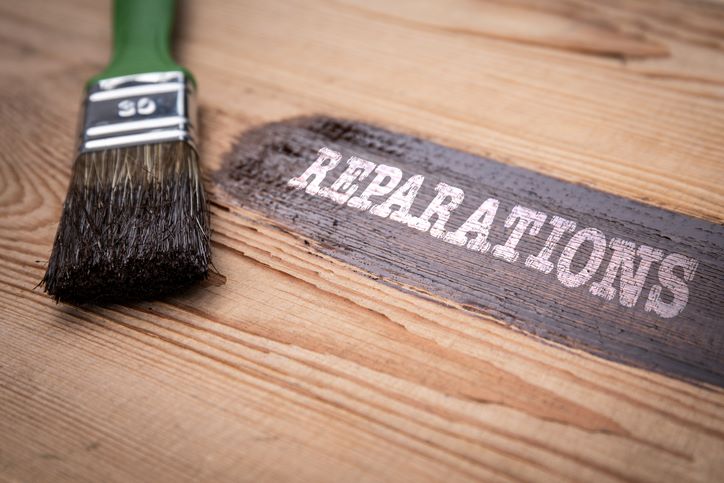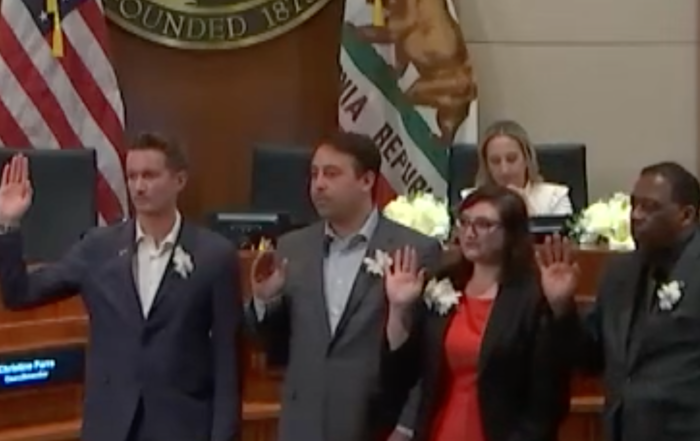The Santa Monica City Council took on one of the most polarizing political topics in recent memory Tuesday night when they considered the logistics of establishing a reparations program for Black residents.
Contemplating reparations is not a new concept — with cities from San Francisco to Durham, North Carolina and Providence, Rhode Island having considered programs — but Santa Monica’s process is in its preliminary stage. No decision was made as the main consideration of the motion was a report discussing the potential program and the obstacles in front of it.
One of the more complicated aspects of establishing reparations is creating the process of identifying exactly who should be receiving them. Santa Monica Equity and Inclusion Director Lisa Parsons noted specific challenges in finding who deserves reparations in a potential program.
“It’s really rare that you are going to have a perfect claimant,” Parsons said. “There might be something taken from [someone] but their name wasn’t on it because their name wasn’t legally allowed to be on it.”
Parsons explained that one of the obstacles making it difficult to identify those harmed is the context behind what was done. While illegal today, many actions that caused harm to communities were “perfectly justifiable” and legal at the time they were committed. She explained that reparations are not about legality, they are about rectifying immoral actions.
Additionally, it may be difficult to tangibly measure many of the harms perpetrated on these communities. While there are measures like the racial wage gap that quantify past harms, reparations focus on things that don’t have a price or market value. These include the impact of freeway construction and air pollution, denying the opportunity for black entrepreneurs to start their businesses, and sometimes even the racially motivated destruction of property.
However, the program must be race-neutral to comply with 1996’s Proposition 209, which prohibits discrimination or preferential treatment based on race by California government institutions. This significantly impacts the way these programs can be carried out, even if specific harms to African Americans and other communities perpetrated in Santa Monica have been documented.
“You’ll hear a lot about reparations programs that focus on race in other cities,” Parsons said, “But we do not and cannot do it that way.”
Specificity is also important, as reparation programs must identify specific harms done to a particular population. Many people who would be due reparations in a potential program may be unaware that they were harmed. According to Parsons, a registry to catalog who would be part of affected populations is considered the best practice for the program to function.
Councilmember Christine Parra agreed with that sentiment, saying that she believed her Japanese American neighbors would not come forward for reparations because of their culture. She also pointed out that the city of Santa Monica specifically isolated Japanese people returning from the war to live in a single area, saying that her neighbors even showed her that the deed explicitly said that fact.
“Any way that we could come and embrace and speak and do whatever we can to right that,” Parra said, “I would appreciate that.”
City staff have already preliminarily identified several populations, including the Native American tribes that previously occupied what is now Santa Monica land. Equity and Inclusion Officer David Gardinier noted that California is a leader on that front, having returned 125 acres of federal land in the Redwood National Park in March to the Yurok Tribe that had been forcibly removed from the territory during the Gold Rush of the mid-1800s.
In Southern California, Huntington Beach returned a 6.2-acre land title to the Acjachemen Tongva Land Conservancy (ATLC) last November. Councilmember Oscar De La Torre said that these discussions both in Santa Monica and around the country were “A long time coming,” and that “Ultimately, what we want is for people to be proud of the country that they call home, and there are grievances,” He added, “So there needs to be a way to address them so we can be a truly United States.”
Santa Monica has a relationship with a different Tongva organization — the Tongva Taraxat Paxaavxa Conservancy (TTPC) — and collaborated with them last fall to brainstorm several ideas for a land return plan. This includes potentially sectioning off a piece of land to create a Living Land Monument that would host native plants and a plaque dedicating the land to the original inhabitants.
There is also a precedent for financial reparations found in post-World War II America. In the 1980s, the state of California gave $20,000 to each Japanese-American who was interned during the war, with up to an additional $5,000 for those who were wrongfully terminated from their jobs during their internment.
Evanston, Illinois was the first town to provide financial reparations to Black residents when it started its program in 2021, using a 3 percent cannabis tax as a funding mechanism to generate a projected $10 million over 10 years. This fund provides up to $25,000 to black residents for home repairs or other property costs.
Councilmember Caroline Torosis was curious about the city’s plan to fund a potential reparations program, noting that the state and philanthropic partners may help support a program financially. She also referenced a package of bills on the state level from the California Legislative Black Caucus — such as SB 1050 co-authored by Lola Smallwood-Cuevas that returns land seized through racially motivated eminent domain — and asked city staff to follow up on the package.
The discussion of a reparation plan will continue in July with the citywide Equity Plan, which will include a more solid set of recommendations for reparations in Santa Monica.
Photo by tumsasedgars on iStockphoto.com
Stay informed. Sign up for The Westside Voice Newsletter
By clicking submit, you agree to share your email address with Westside Voice. We do not sell or share your information with anyone.








